Corsair Hydro Series H150i Pro RGB and H115i Pro RGB Reviews
March 19, 2018 | 18:00
Companies: #corsair
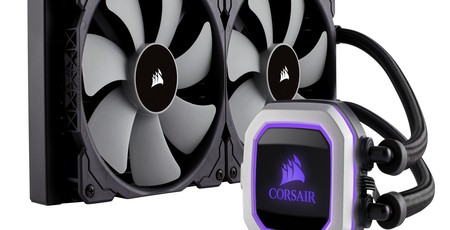
Manufacturer: Corsair
UK price (as reviewed): H150i Pro RGB: £154.99 (inc. VAT); H115i Pro RGB: £129.98 (inc. VAT)
US price (as reviewed): H150i Pro RGB: $169.99 (exc. tax); H115i Pro RGB: $139.99 (exc. tax)
Corsair is the go-to name for all-in-one liquid-cooling, having established itself firmly with the original H80 and H100 and continuing to deliver solid updates and reiterations to the Hydro Series family ever since. With us today are two of the latest and largest models in the range, the 280mm-based H115i Pro RGB and the new flagship model, the 360mm-based H150i Pro RGB. Coming in at £130 and £155 respectively, these coolers do not come cheap, but they are the top-end models with large radiators and numerous features not found further down the stack.
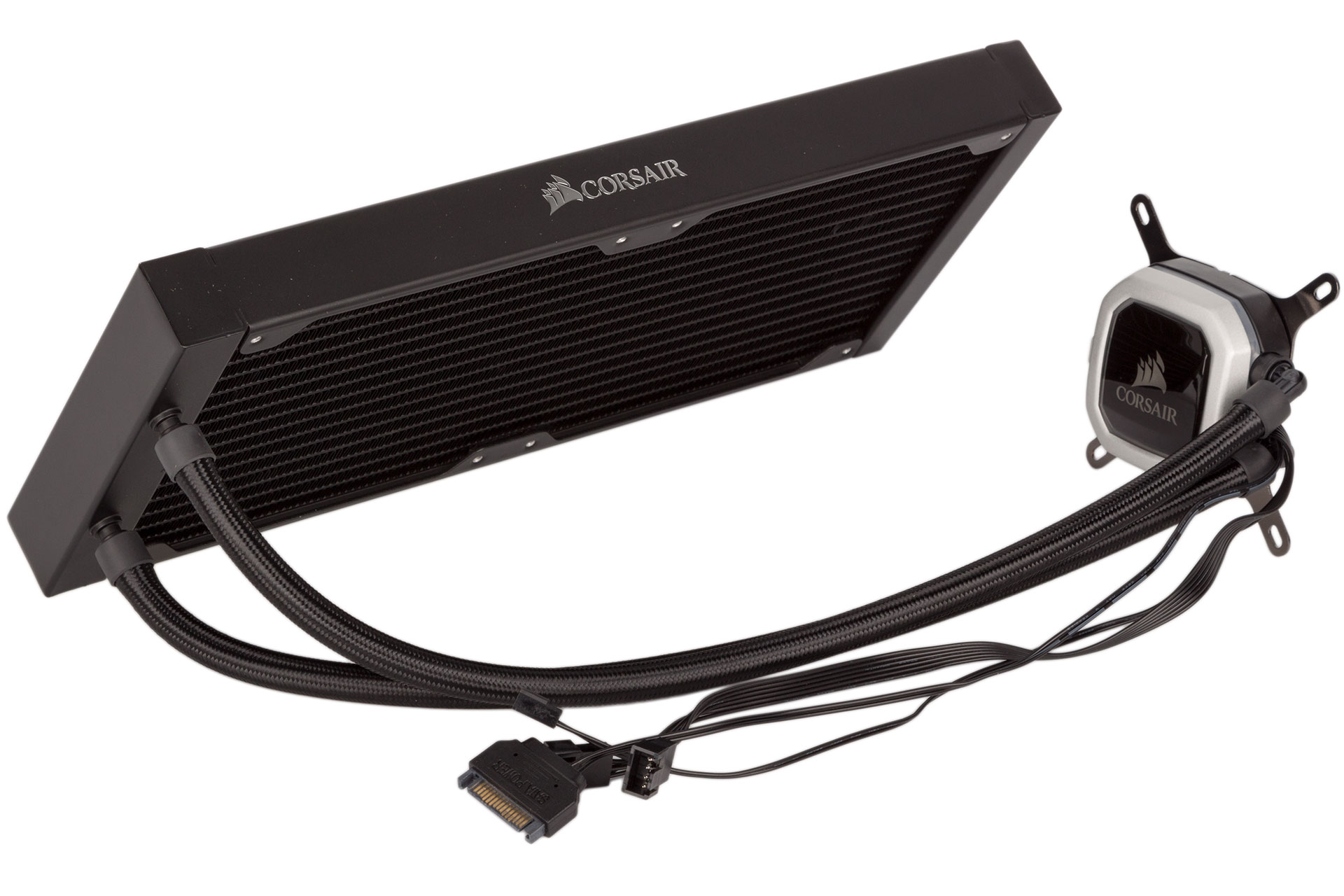
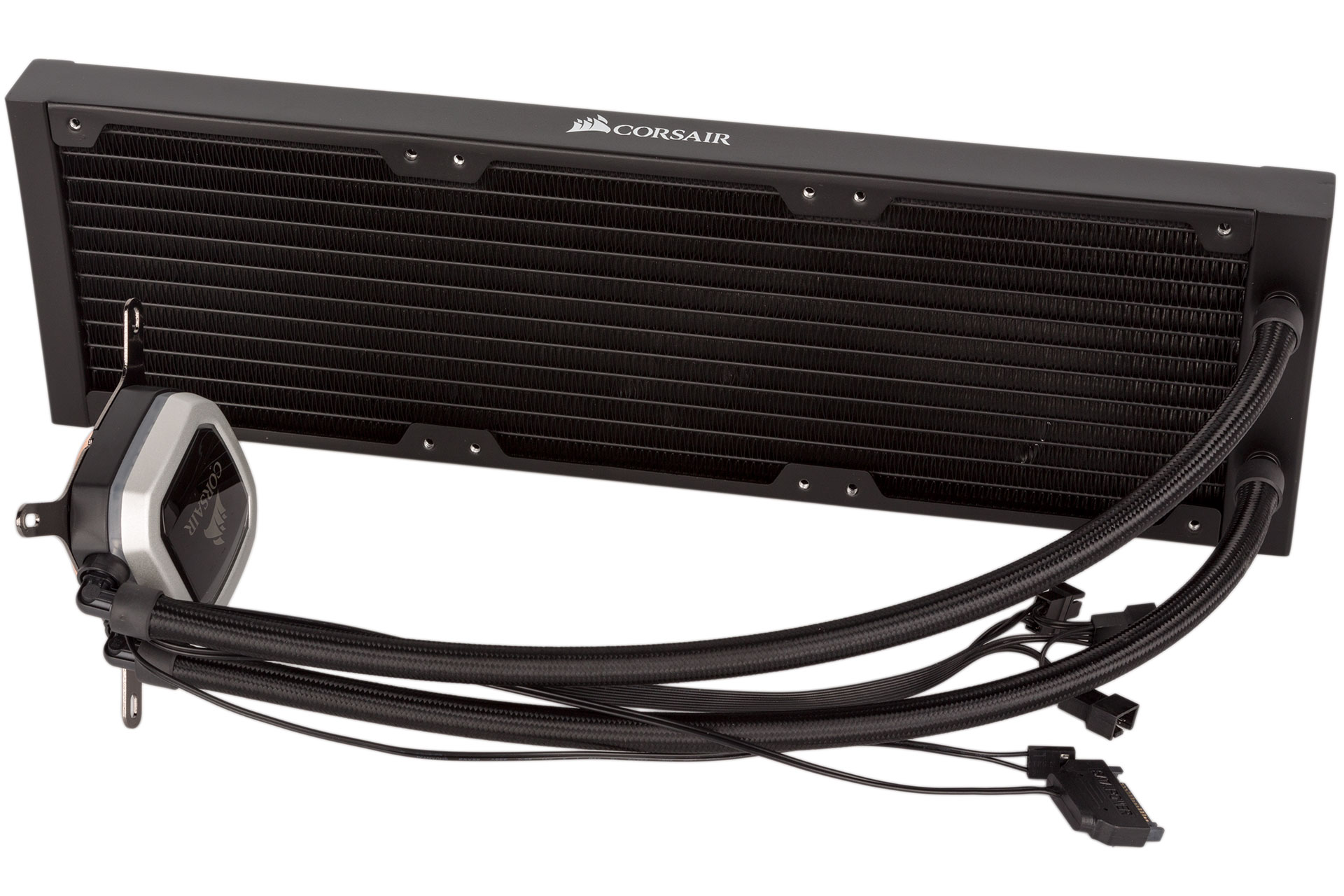
It’s been a while since we’ve reviewed a cooler here, so we’ve taken the opportunity to update our cooling test platform, or rather platforms. Instead of testing coolers on three different sockets, we now test on up to four – lucky us! This allows us to feature the mainstream and HEDT offerings from both Intel and AMD, so we have test systems built around Intel’s LGA 1151 and LGA 2066 sockets, AMD’s Socket AM4 (Ryzen), and – if supported - AMD’s Socket TR4 (Threadripper). Neither of these coolers supports Threadripper systems out of the box, but all other current sockets are covered.
Since both coolers are very much the same except for radiator size (and thus number and size of bundled fans), what we say in this section applies equally to both.
Radiators are rarely exciting, but we do think the ones Corsair uses look sharp thanks to a clean rectangular outline and the shiny chrome-effect logo. The fins are packed densely and evenly and overall build quality appears high. There is no refill port, though, and this is something that other similar coolers have started to offer.
The tubing is great looking too thanks to a braided finish. We’ve found the tubing on previous models to be a bit thick, but we like the diameter chosen here a lot, and we can’t complain when it comes to flexibility either. These coolers aren't designed for expansion, so they are fully sealed units with no way of disconnecting tubes without breaking them.
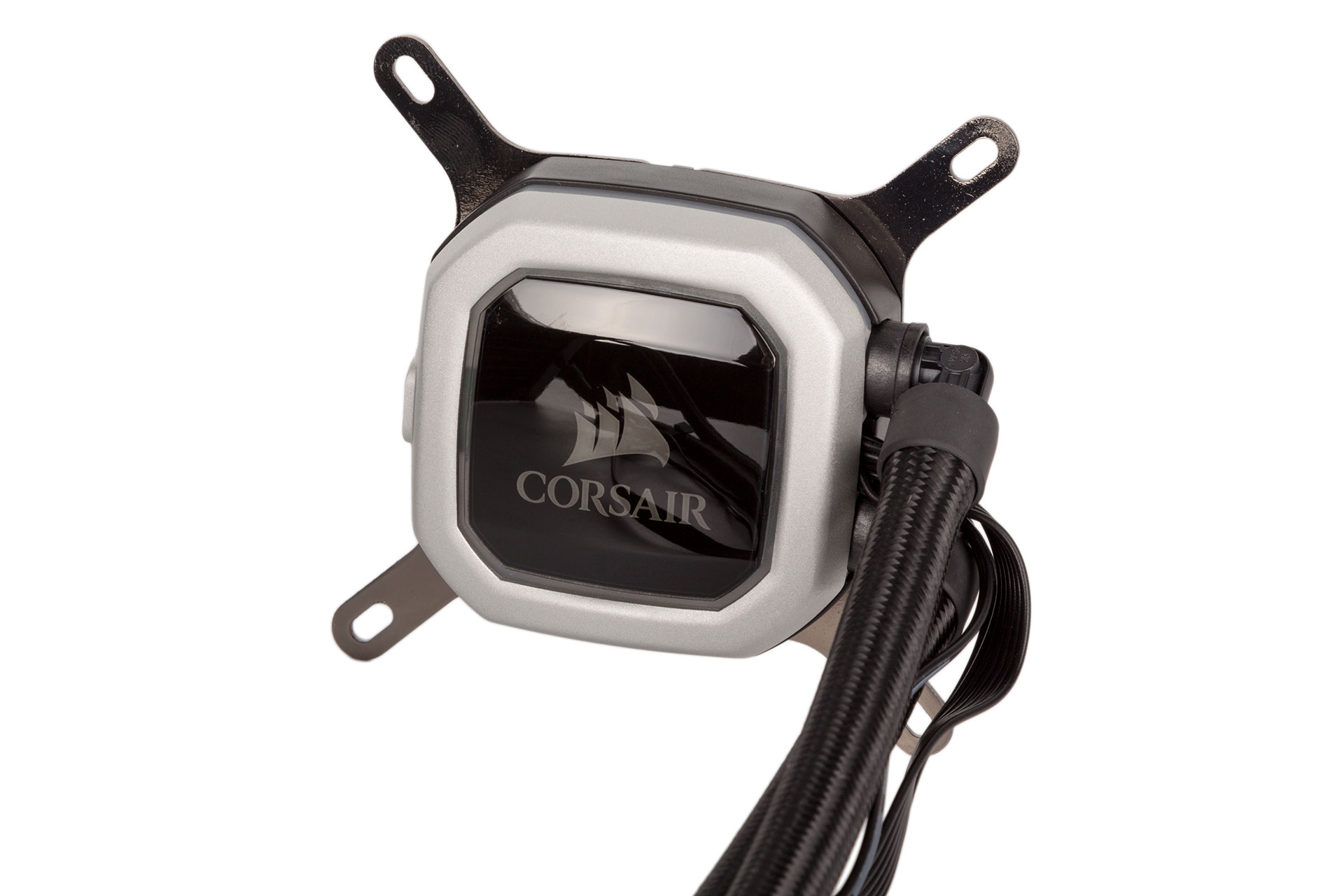
The combined pump and water block unit is none too bulky either, and while it does use plastic it doesn’t feel tacky or cheap. The circular copper baseplate comes with an even layer of thermal paste pre-applied, saving you a job, although you don’t get any extra in the box. The Intel mounting bracket is also attached out of the box, but the latest twist-to-lock mechanism means that swapping to the AMD one is child’s play.

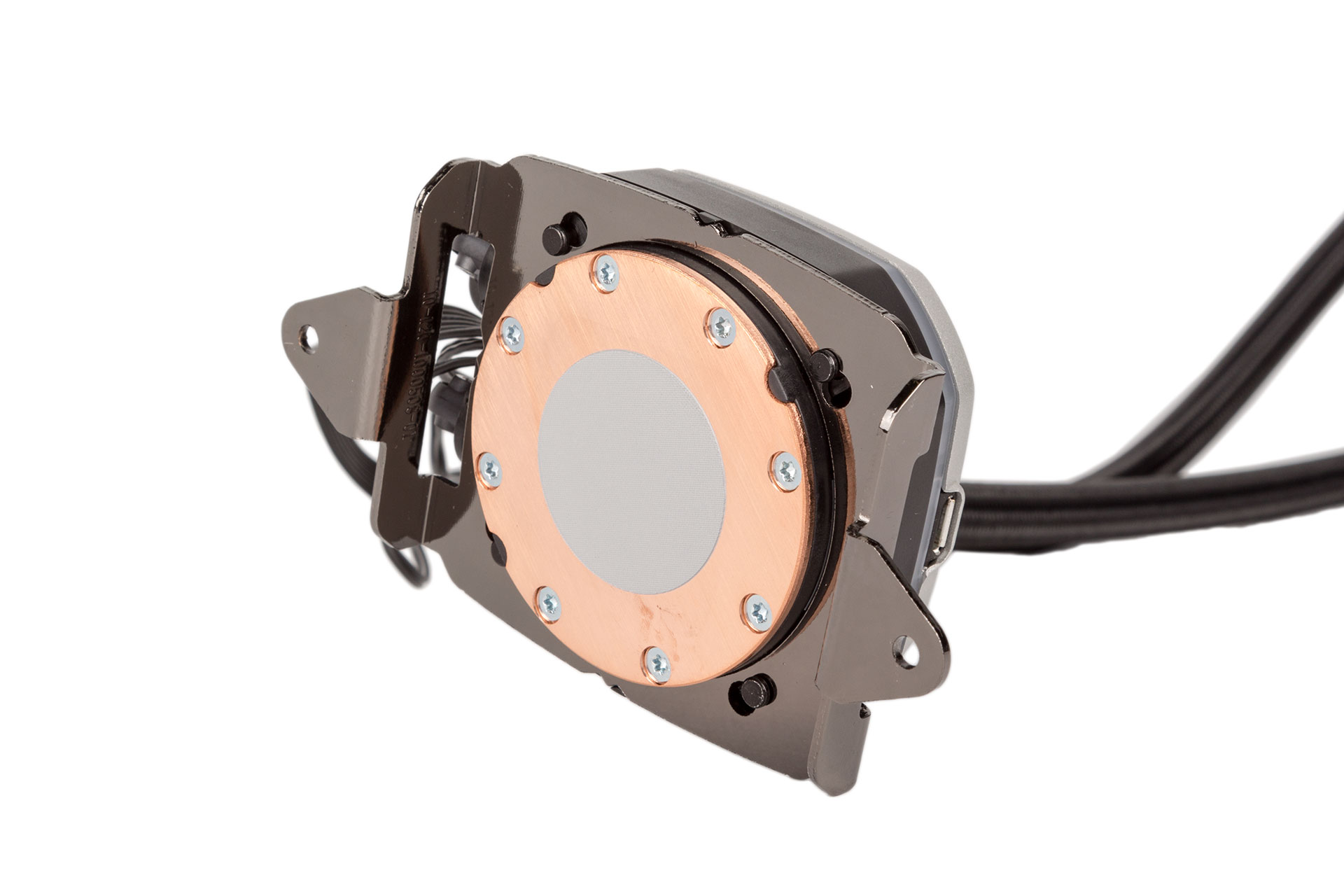
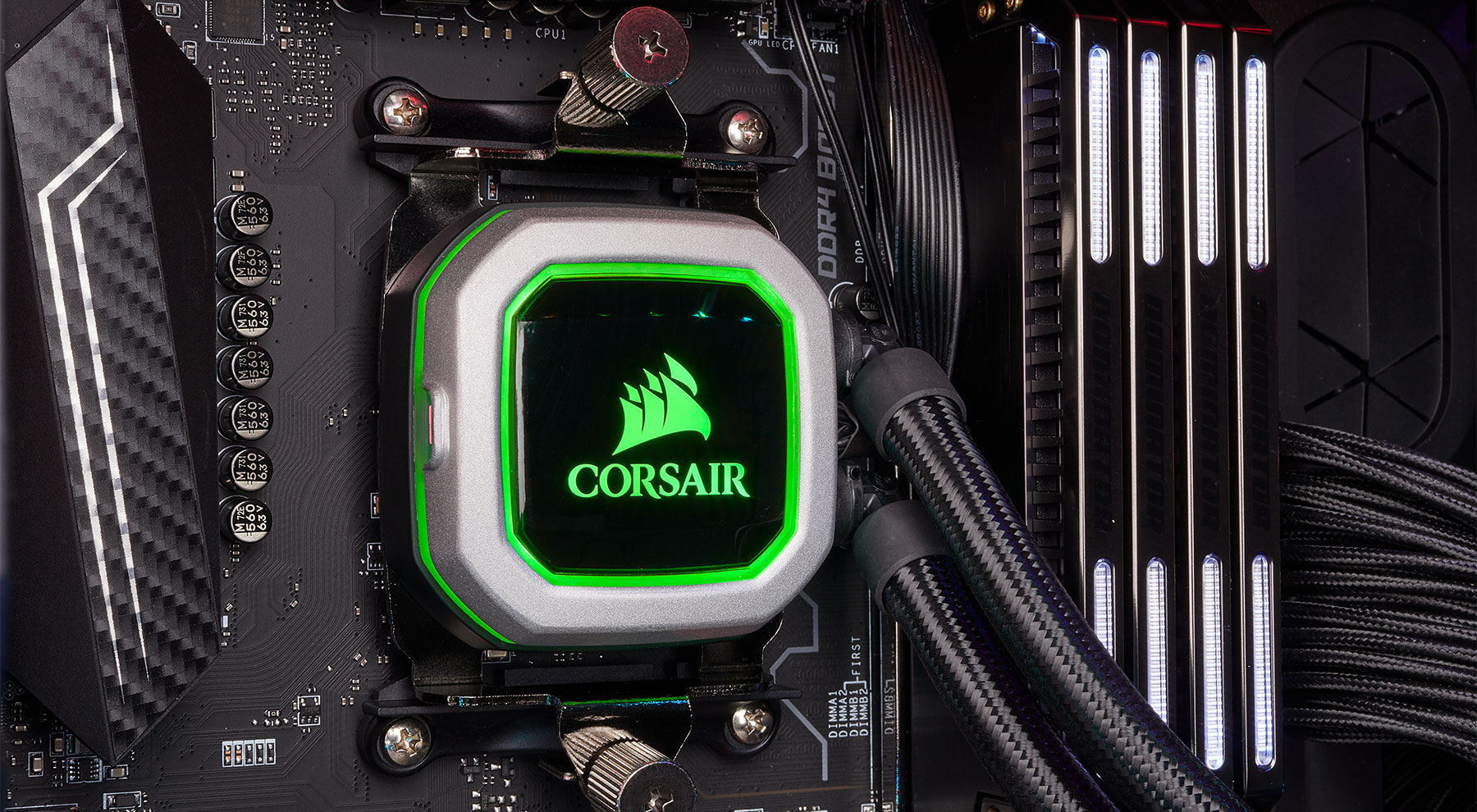
The RGB in the name refers to the pump unit, as the Corsair logo and sails as well as the two edges of the white section have RGB lighting that’s controllable through software, although it’s controlled as a single section rather than independently like with NZXT. The fans, meanwhile, are not RGB-illuminated, so you just have standard black frames with grey blades. The cables for these are flat and black making them easy to route but perhaps less attractive than braided ones.

Emerging from the pump unit is a set of flat black cables – one three-pin connector for the pump, one SATA for power, and a splitter cable with two (H115i) or three (H150i) four-pin fan headers, meaning you don’t have to use any extra motherboard headers. That said, it also means Corsair is not envisioning anyone using push-pull setups on either cooler, as there are only enough connectors for a single row of fans. The pump unit also has a micro-USB header, and a supplied cable will connect this to your motherboard’s USB 2.0 header, enabling digital control and monitoring of your Cooler through Corsair Link.
Mounting the pump unit to your CPU is fantastically easy. Intel sockets use a plastic backplate with pre-installed screw sockets; this excludes LGA 20xx of course, since they’re built into the socket itself. Simply tighten four mounting screws into place, align the pump’s mounting arms over these, and fasten a set of thumbscrews – it can be done in a minute or two with no fiddly bits. AMD makes use of the hooks on the default mounting apparatus. It’s a little fiddly hooking it into place, but again it really isn’t complicated.
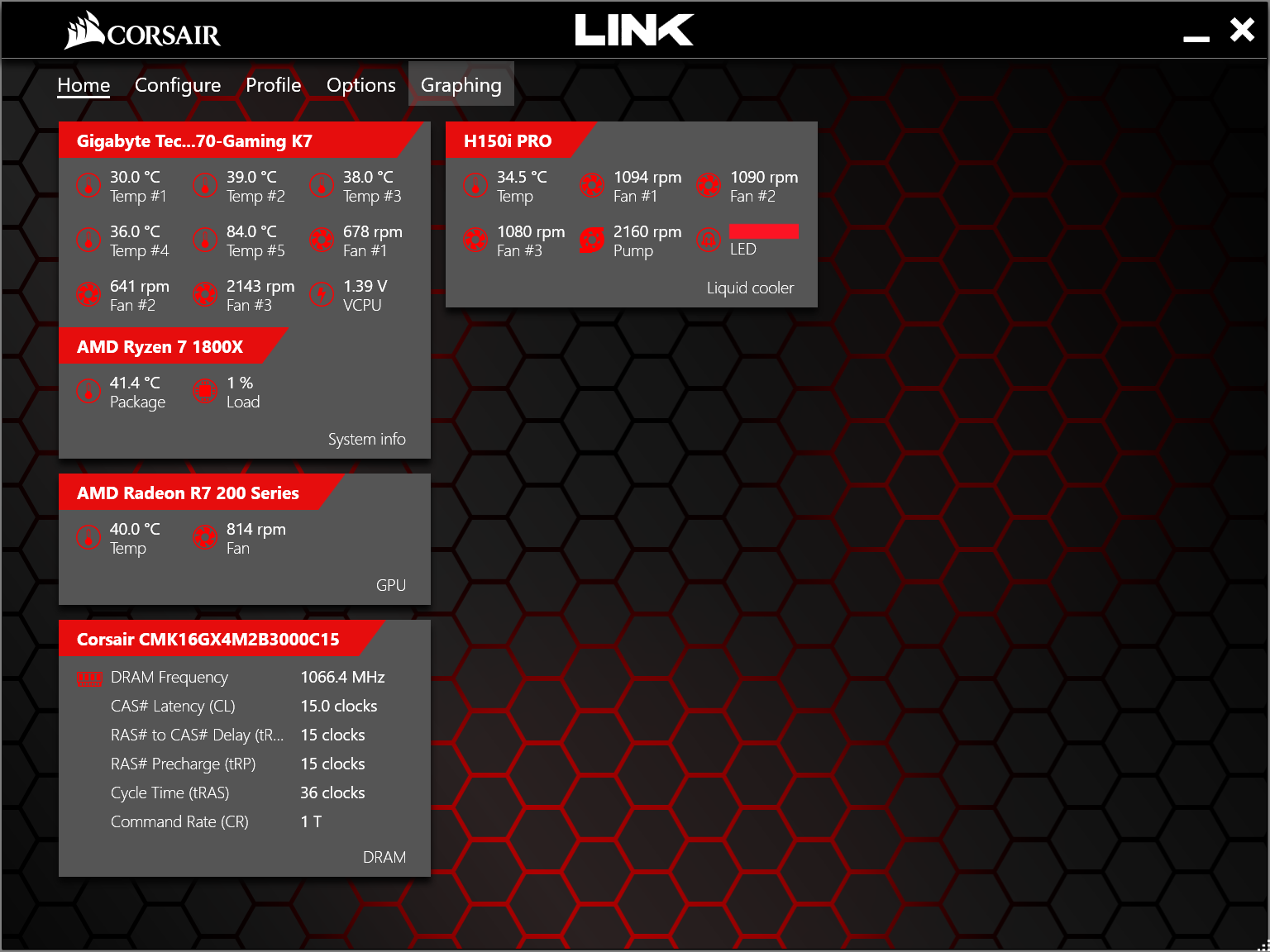
Corsair’s Link software, currently on version 4, is used to monitor and control the two coolers via their USB headers. The LED, pump, and fans are all separated into their own icons, and clicking these brings up a new screen with a range of options.
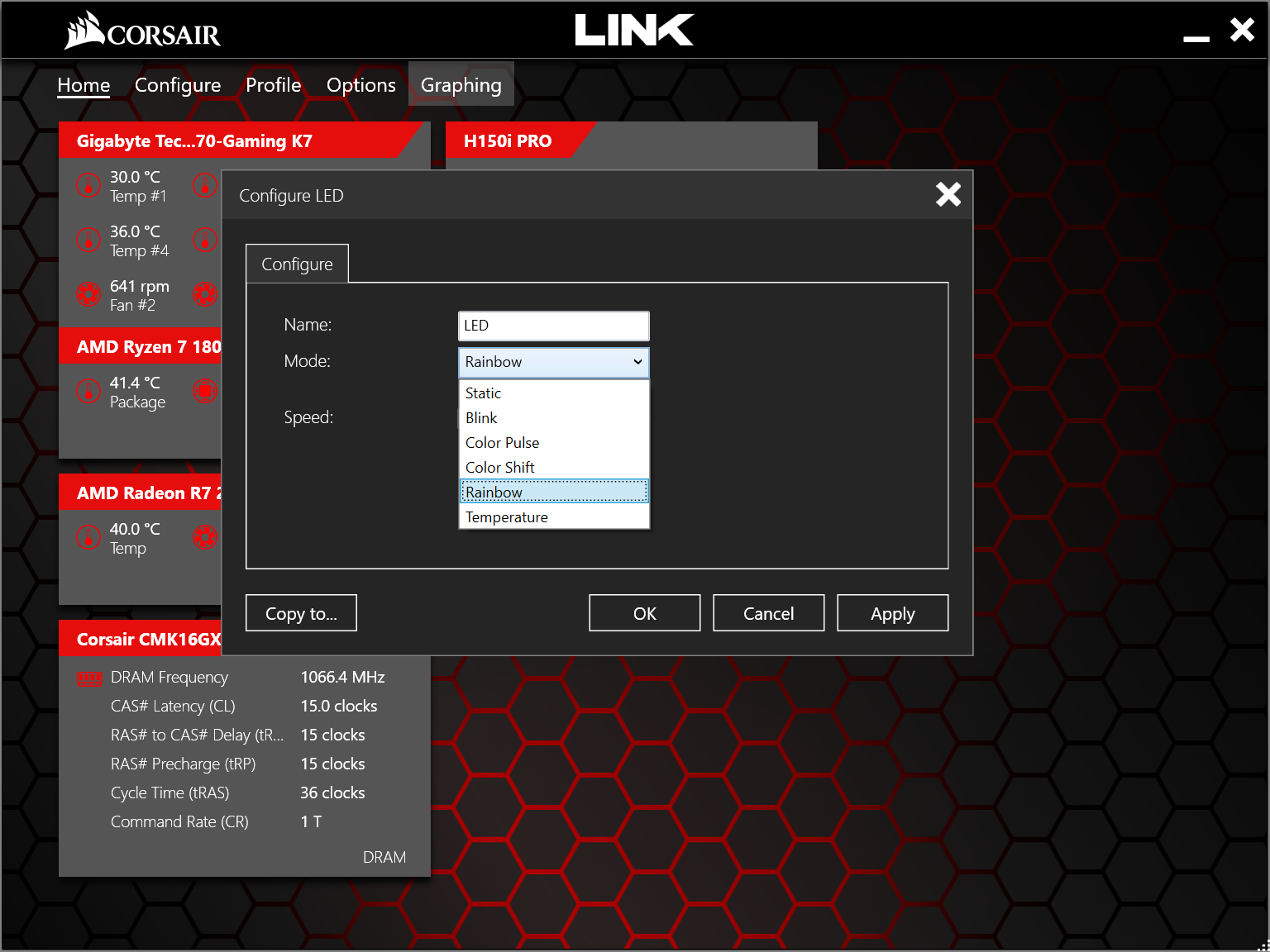
For example, there’s a variety of effects and RGB configuration available for the LED.
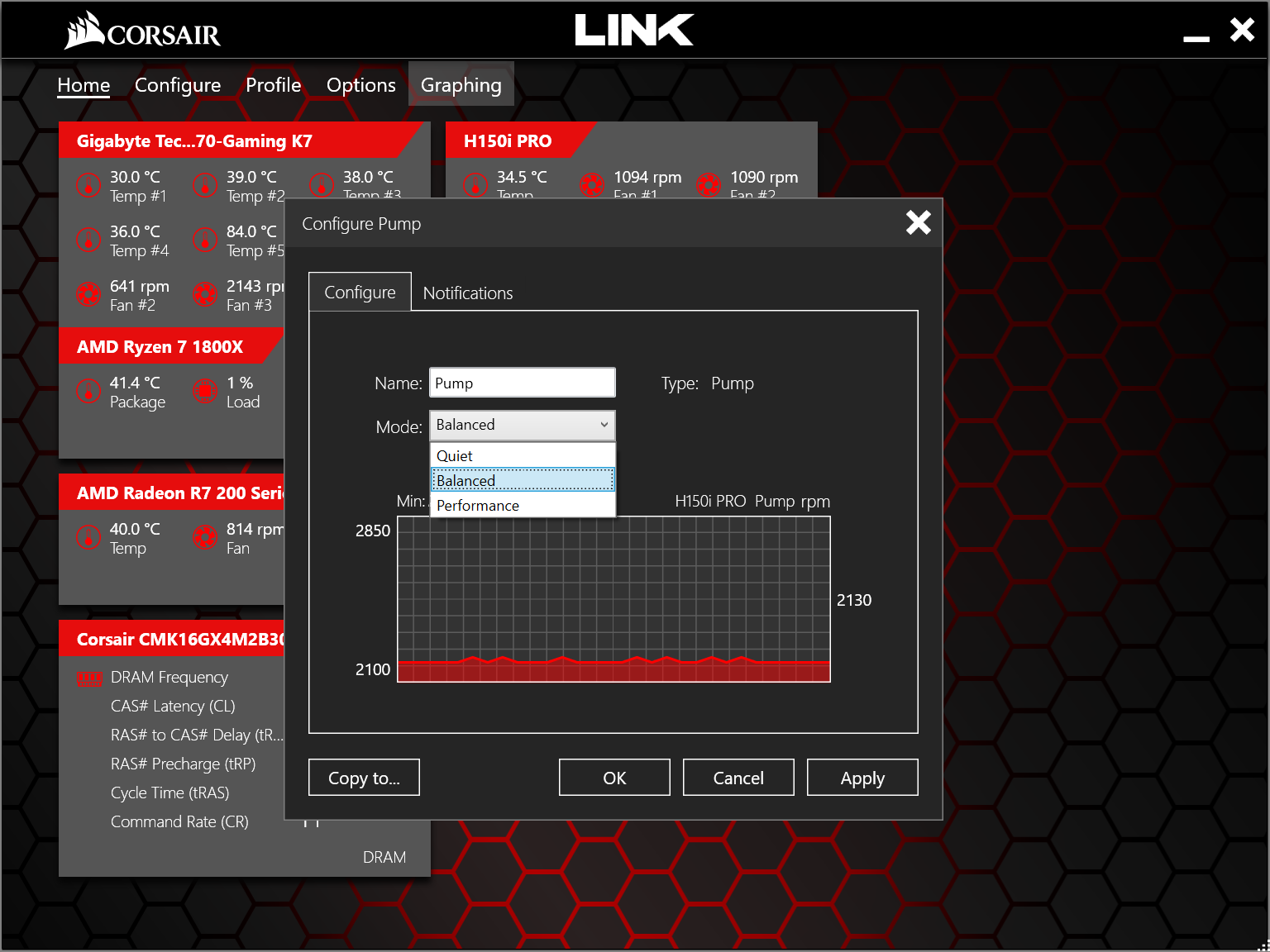
The pump can be set to three different modes that alter its speed (Quiet for ~1,100 RPM, Balanced for ~2,100 RPM, and Performance for ~2,800 RPM).
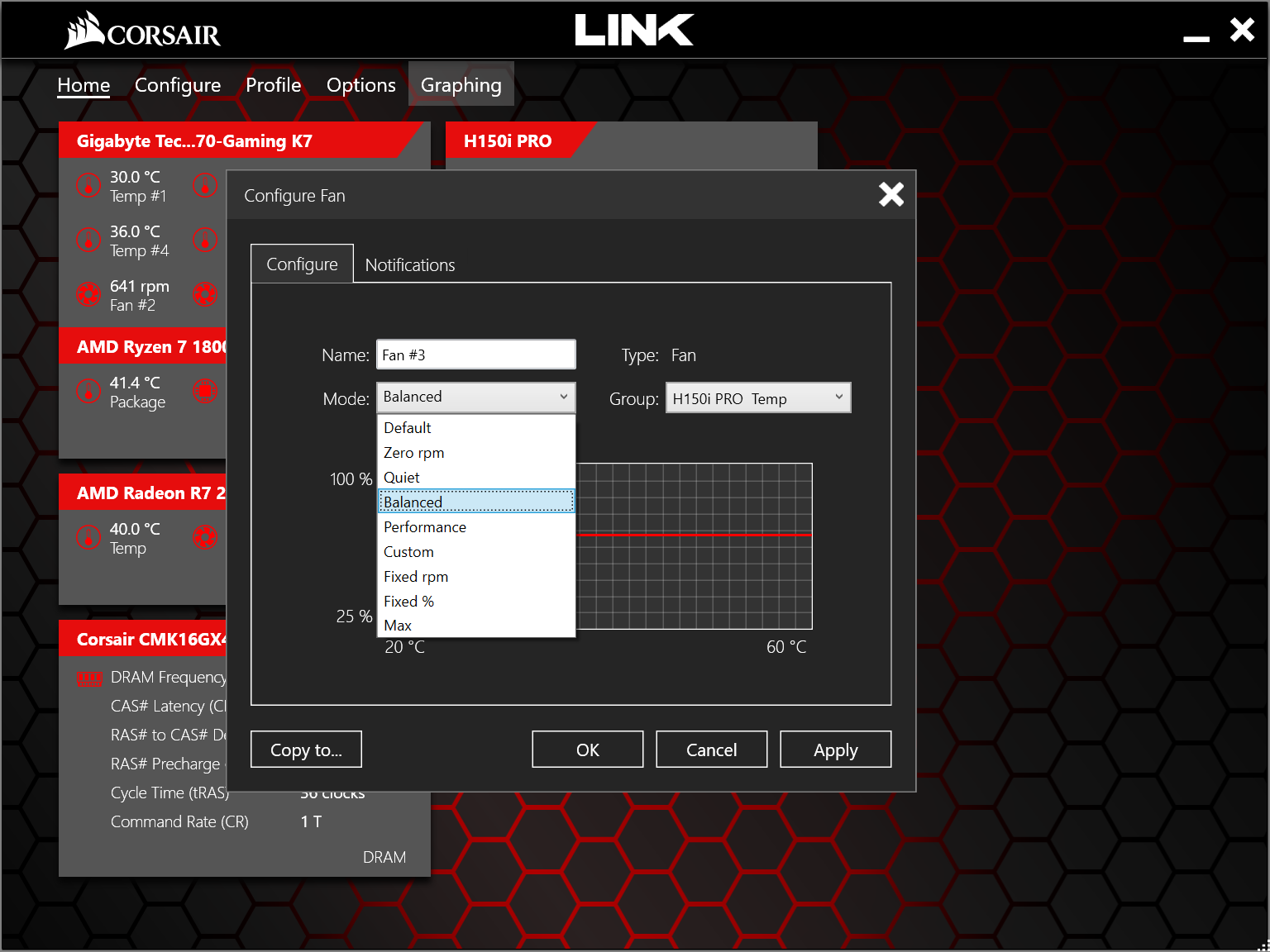
The fans, meanwhile, have these three options with different fan curves, and the fan curves can be customised based on the temperature of the cooler fluid or of your CPU or GPU. Alternatively, you can simply set a fixed RPM or percentage or even turn them off. The fans all go down to about 500 RPM, and the maximum speed of the fans are 1,200 RPM or 1,600 RPM for the 140mm and 120mm models respectively.
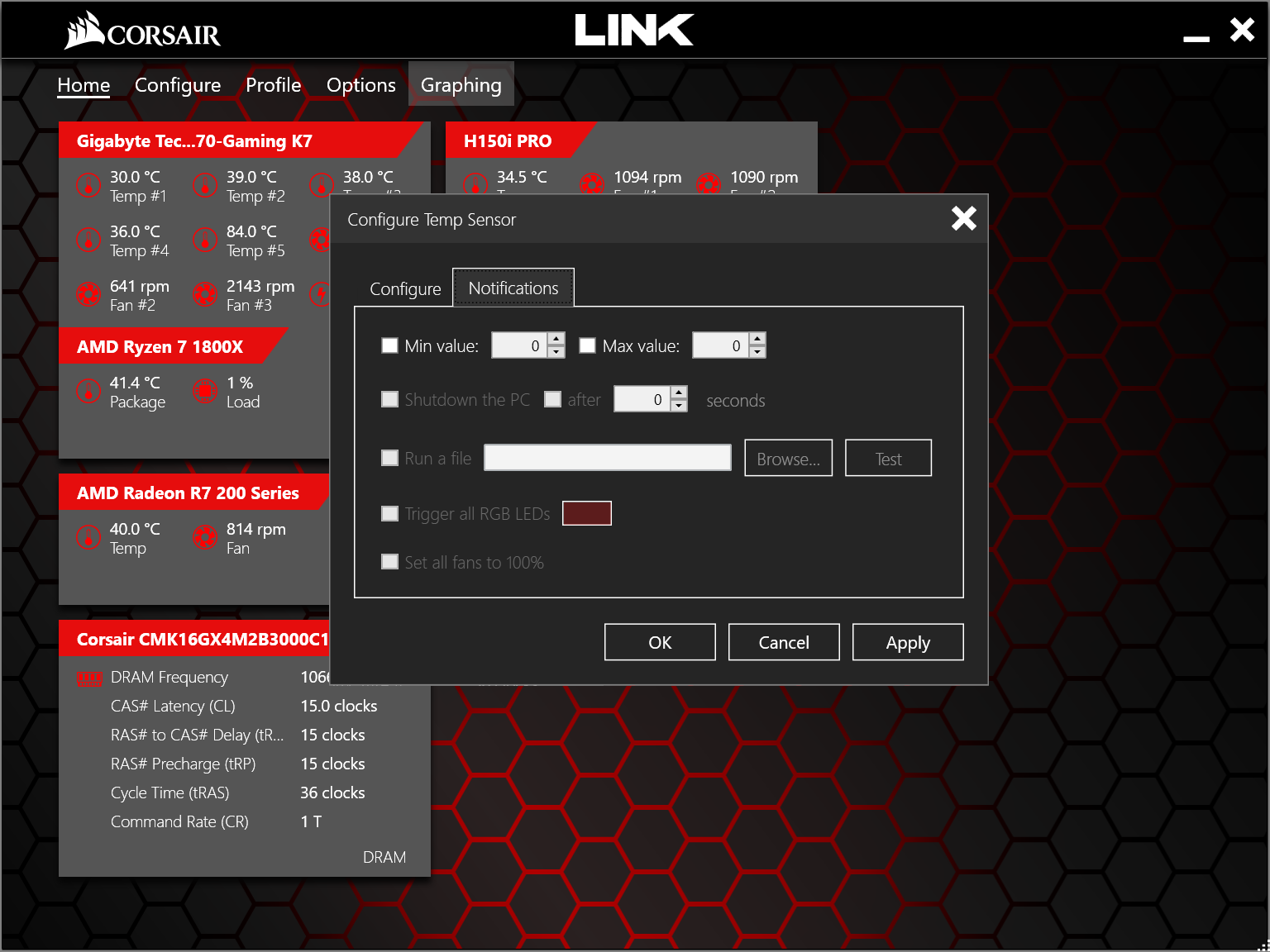
One other neat feature is the ability to set alerts for when certain system temperatures e.g. CPU or that of the cooler itself reach a maximum value. You might shutdown the PC for safety, trigger all the RGB LEDs to a set colour as a warning, or set all fans to maximum.
H150i Pro RGB Specifications
- Compatibility Intel: LGA 20xx, LGA 115x; AMD: Socket AM4, Sockets AM3(+)/AM2(+)/FM2(+)/FM1
- Radiator size (mm) 396 x 120 x 27 (W x D x H)
- Fan(s) 3 x Corsair ML120 PWM, up to 1,600 RPM
- Fan size (mm) 25 x 25 x 120
- Stated noise 25 dB(A)
H115i Pro RGB Specifications
- Compatibility Intel: LGA 20xx, LGA 115x; AMD: Socket AM4, Sockets AM3(+)/AM2(+)/FM2(+)/FM1
- Radiator size (mm) 315 x 143 x 29 (W x D x H)
- Fan(s) 2 x Corsair ML140 PWM, up to 1,200 RPM
- Fan size (mm) 25 x 25 x 140
- Stated noise 20.4 dB(A)

MSI MPG Velox 100R Chassis Review
October 14 2021 | 15:04

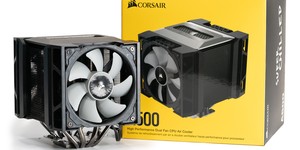

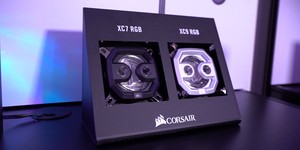




Want to comment? Please log in.